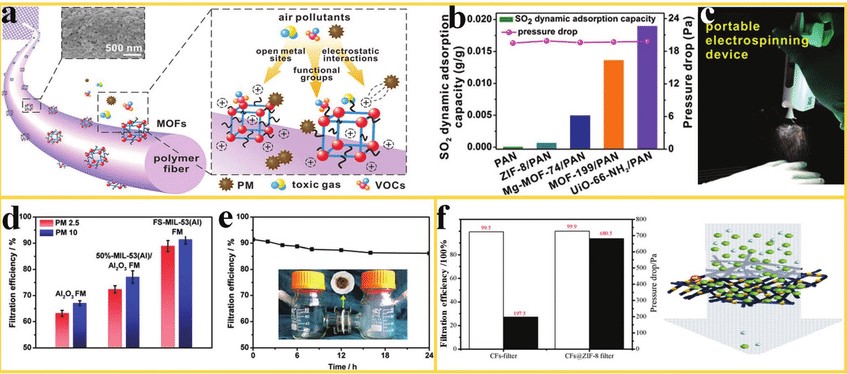© Copyright 2020 Foshan Membrane Technology Co., Ltd. All rights reserved. Sitemap
Herein, recent developments of metal-organic frameworks (MOFs) structured into nanofibers by electrospinning are summarized, including the fabrication, post-treatment via pyrolysis, properties, and use of the resulting MOF nanofiber architectures. The fabrication and post-treatment of the MOF nanofiber architectures are described systematically by two routes: i) the direct electrospinning of MOF-polymer nanofiber composites, and ii) the surface decoration of nanofiber structures with MOFs. The unique properties and performance of the different types of MOF nanofibers and their derivatives are explained in respect to their use in energy and environmental applications, including air filtration, water treatment, gas storage and separation, electrochemical energy conversion and storage, and heterogeneous catalysis. Finally, challenges with the fabrication of MOF nanofibers, limitations for their use, and trends for future developments are presented.
在此,总结了通过电纺丝结构化为纳米纤维的金属有机骨架(MOF)的最新发展,包括制造,通过热解的后处理,特性以及所得MOF纳米纤维架构的使用。 MOF纳米纤维结构的制造和后处理通过两种途径进行系统地描述:i)MOF聚合物纳米纤维复合材料的直接电纺丝; ii)用MOF对纳米纤维结构进行表面装饰。 就其在能源和环境应用中的用途(包括空气过滤,水处理,气体存储和分离,电化学能量转换和存储以及非均相催化)的用途,对不同类型的MOF纳米纤维及其衍生物的独特性能和性能进行了解释。 最后,提出了MOF纳米纤维的制造挑战,其使用限制以及未来发展趋势。

Published: 2020
Journal :ADVANCED SCIENCE
Impact Factor:6063
Paper link: https://onlinelibrary.wiley.com/doi/full/10.1002/advs.201902590